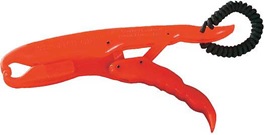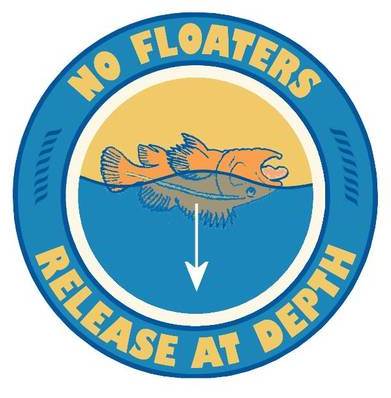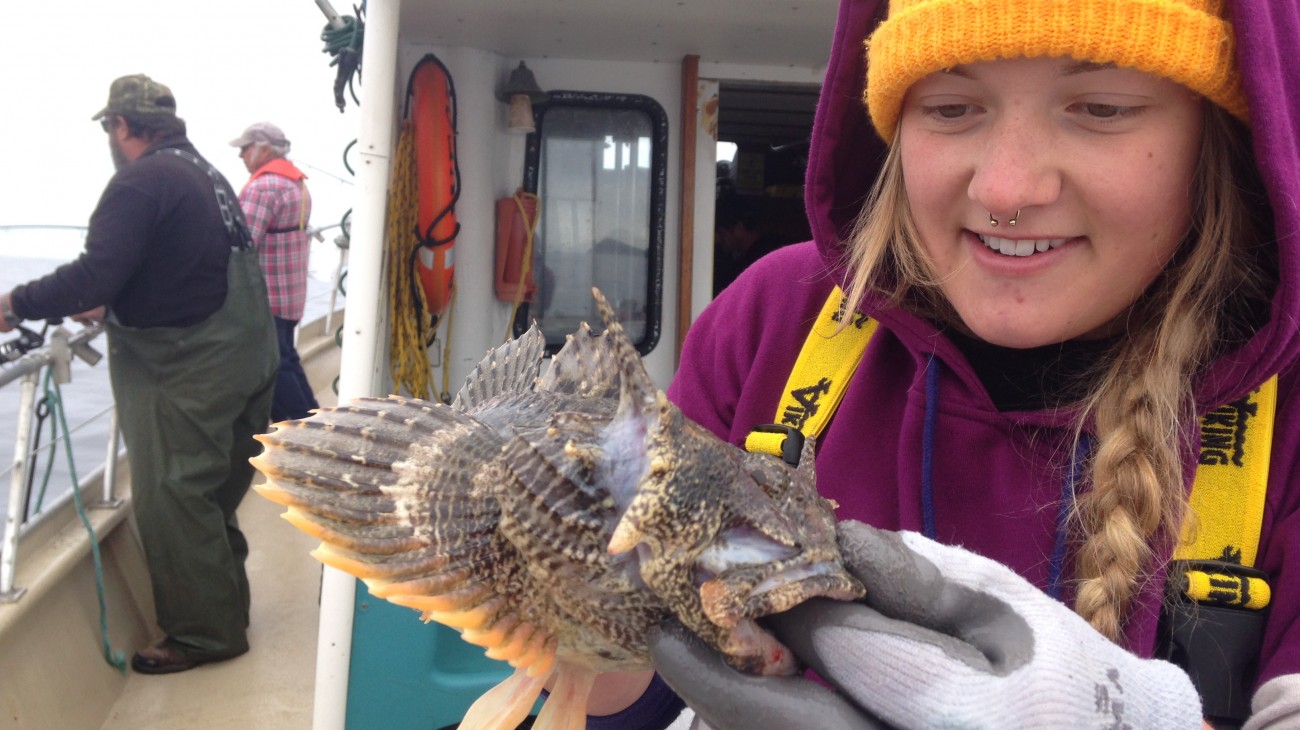“Fish on!” exclaims a volunteer angler as her fishing pole bends deeply over the side of the boat. Slowly, a brightly colored rockfish is gently reeled up to the surface. These fish are collected, and then released, in order to obtain important biological data as part of ODFW’s ecological monitoring of marine reserves.
However, this particular rockfish looked more like an alien than a fish with its bulging, popped-out eyes and esophagus protruding out of its mouth. The reason? A condition known as barotrauma.

Barotrauma is caused by gasses expanding in a fish’s swim bladder. When the fish is reeled to the surface from deep ocean depths, the swim bladder begins to expand as the surrounding water pressure decreases. This expanded swim bladder often displaces the fish’s internal organs which can result in the tell-tale bulging-eyes or extruding esophagus, or sometimes in less obvious signs that are not readily visible. Fish that have experienced barotrauma aren’t always able to swim back down on their own and may float on the surface when they are released by the angler. Without intervention, these fish may die.
“Many rockfish species are long-lived and may not begin to reproduce until they are 10-20 years old. So, a big fish might still be a teenager,” explains Dr. Brittany Huntington, the lead research scientist with ODFW’s Marine Reserves Program. So, these big fish that succumb to barotrauma after being caught may not have even been around long enough to have reproduced yet.
Bob Hannah, a research scientist at the ODFW Marine Resources Program, and his team have been conducting cutting-edge barotrauma research over the last half decade looking at the survival of different species of fish, caught at different depths. “We have good information on short-term survival, but we don’t know much about long-term survival. Plus, survival varies by species and by depth.”
So, what are things anglers can do to help combat barotrauma?
“The best thing to do, when you can, is to avoid catching them in the first place,” says Bob. Fishing in shallower waters can also decrease the chances of fish developing barotrauma as they’re brought to the surface, due to less change in pressure. Another technique is returning the fish back to a depth which it can recompress at, via a fish descending device. The use of descending devices helps increase the chance of survival.
“The best thing to do, when you can, is to avoid catching them in the first place.”
– Bob Hannah, ODFW Researcher
An important piece of descending devices is making sure people know how to use them. The Marine Reserves research team uses descending devices during their hook-and-line surveys, showing volunteer anglers how to use the devices and providing the volunteers with their own to take home with them for future fishing trips.

Other measures the Marine Reserves research team takes to minimize occurrences and effects of barotrauma during hook-and-line surveys is only conducting surveys on shallower rocky reefs and only sampling enough of each fish species to be statistically significant, without having to catch more fish than necessary.
Back on the boat, the ODFW scientist quickly logs the fish’s length and weight, records the condition of the fish, and then immediately lowers it back down to the depth it was caught. This information will be used to track the incidences of barotrauma in shallow water areas, helping to shed more light on this important issue.
Learn more about what you as an angler can do to help reduce floaters.

